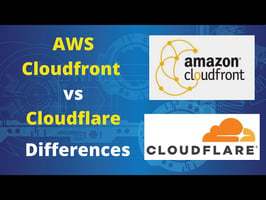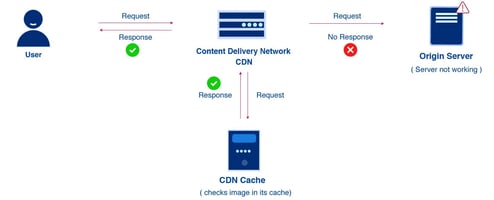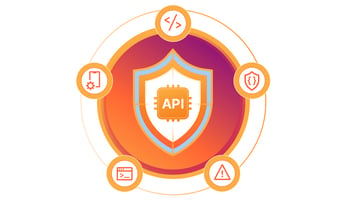When comparing Cloudflare and AWS CloudFront as content delivery networks (CDNs), several key...
Full Guide to Supercharging Website Speed with Cloudflare (2024 Edition)
In the digital landscape of 2024, websites continue to serve as the primary gateways for users seeking information and services. However, the importance of a smooth and efficient website experience remains paramount, as sluggish performance can lead to user frustration, decreased conversion rates, and a tarnished business reputation.
Luckily, advanced Content Delivery Network (CDN) and optimization technologies are available to address these challenges, with Cloudflare standing out as a key player in this arena.
After an extensive evaluation of over 100 client websites in my web consultancy practice, Cloudflare has proven to be an invaluable solution for enhancing both speed and security, all while remaining accessible at no cost. When combined with the best practices outlined in this guide, websites can make the transition from being slow and clunky to lightning-fast.
The benefits of a high-speed website are evident: satisfied visitors who quickly access content contribute directly to sustained business growth and increased revenues. With this in mind, let's not waste any more time and delve into expert techniques for optimizing website performance.

Part 1: Fundamental Concepts of Speed
To begin, it's essential to establish why speed matters, how it is measured, what constitutes as "fast," and the factors that can lead to poor website performance.
The Significance of Speed
Extensive research consistently demonstrates that the speed of a website has a profound impact on its success metrics:
- Over 53% of mobile site visitors will abandon a page that takes more than 3 seconds to load, resulting in missed opportunities.
- Even a 100-millisecond delay in page loading can decrease Amazon's sales conversions by 1%, highlighting the importance of every fraction of a second.
- Pages that load in under 5 seconds enjoy 120% higher engagement compared to their slower counterparts.
- Search engine giant Google considers website speed when determining search rankings and crawl allocation.
Clearly, speed is crucial, especially in the mobile era, where user patience is in short supply. Visitors expect instant gratification and a seamless experience. If your website feels slow, unresponsive, or unreliable, users will quickly navigate to alternative options.
How Page Speed Is Evaluated
But what exactly defines "fast," and how do we measure the speed of a website? Two key metrics come into play:
Time to First Byte (TTFB): This metric represents the time it takes for the server to respond after receiving a user's request, irrespective of the website's code.
- Benchmark TTFB values are typically under 200 milliseconds, with scores under 100 milliseconds considered exceptionally responsive.
High TTFB delays are often caused by suboptimal backend configurations, overloaded servers, or significant geographical distances between users and the servers. CDNs like Cloudflare play a vital role in reducing this physical distance and improving TTFB.
DOM Load Time: This metric measures the time it takes for a browser to construct the entire Document Object Model (DOM) tree, including asynchronously fetched assets like CSS, JavaScript, and images, after receiving the initial HTML.
- A website becomes interactive and usable once it reaches this threshold. For dynamic websites, optimized caching strategies are crucial to prevent redundant page generation work.
Industry benchmarks recommend achieving DOM Load Times of under 2 seconds on mobile devices and under 3 seconds on desktops. It's generally advisable to keep load times below 5 seconds to minimize bounce rates.
Defining "Fast
To summarize, we can define a "fast" website based on two critical achievement thresholds:
- TTFB: Server response time under 100 milliseconds.
- DOM Load: Full interactivity within 5 seconds (2 seconds for mobile).
To gauge your website's performance accurately, various testing tools, such as Pingdom, WebPageTest, and Chrome DevTools, can provide detailed insights into how your live site currently fares in terms of speed and performance.
Causes of Poor Web Performance
Now that we've established the core metrics and targets for page load speed, it's essential to understand what typically hinders website speed:
A) Server Location: Websites hosted far away from users can experience longer data transfer roundtrips, leading to slower loading times.
B) Overloaded Hosting: Shared hosting services can become strained when experiencing high traffic, resulting in performance bottlenecks.
C) Bloated Pages: Excessive use of plugins, widgets, animations, ads, and trackers can increase page weight and the number of asset requests, causing slower loading times.
D) Unoptimized Images: Large, uncompressed image files can slow down data transfers and impede website performance.
E) Repeated Server Work: Regenerating identical dynamic page content can create redundant lag. Caching mechanisms help prevent this by storing and serving pre-rendered content.
F) Inefficient Code: Poorly written back-end code, inefficient database queries, or excessive front-end code can delay the construction of web pages.
G) DDoS Threats: Cyberattacks, such as Distributed Denial of Service (DDoS) attacks, can flood servers and network infrastructure, deliberately disrupting a website's availability.
Cloudflare's Solutions
Cloudflare, as a content delivery network (CDN) and security provider, offers a comprehensive set of solutions to address these issues and enhance website performance and security. Here's an overview of Cloudflare's core benefits in 2024:
1. Global CDN
Traditional hosting often restricts websites to a single region, leading to slower international traffic routing. Cloudflare, on the other hand, maintains hundreds of data centers globally. Instead of directing all traffic to your origin server, Cloudflare's network caches and serves page resources from the nearest edge location to visitors. This localization of content delivery significantly reduces latency and speeds up website loading times.
2. Intelligent Caching
Cloudflare caches full pages at edge locations for defined periods, preventing the need to repeatedly generate identical dynamic page markup. This caching mechanism reduces the load on backend resources and databases, resulting in improved website performance.
3. DDoS Protection
Cloudflare provides robust DDoS protection by absorbing and filtering out malicious traffic before it reaches your origin server. Techniques like rate limiting are employed to block disruptive traffic, ensuring the availability of your website even during attacks.
4. Mobile Optimization
Recognizing the diversity in device types and connection speeds, Cloudflare optimizes content delivery for different devices. It delivers resized and compressed resources based on device capabilities and connection speeds, ensuring a smooth user experience, particularly on mobile devices and slower networks.
5. Image/CSS/JS Optimization
Cloudflare optimizes the delivery of static assets such as image files, CSS, and JavaScript by caching them at edge locations. This eliminates the need for repeated requests to the origin server and reduces data transfer. Additionally, files are automatically resized, compressed, and minified, further reducing the size of transferred data.
In summary, Cloudflare acts as an intermediary reverse proxy, shielding your origin infrastructure from the burdens that can hinder website speed and security. This comprehensive set of solutions ensures faster loading times, protection against DDoS attacks, and optimized content delivery, ultimately enhancing both performance and user experience in the digital landscape of 2024.
Certainly, let's continue with Part 3 and Part 4 of the setup and configuration guide for Cloudflare in 2024:
Part 3: Initial Account Setup & Configuration
Getting started with Cloudflare is a breeze and can significantly boost your website's performance. Here's a step-by-step guide:
1. Sign Up: Visit cloudflare.com and sign up for an account. The registration process takes just 60 seconds.
2. Add Your Site: Once registered, enter your website's root domain name to add your site to Cloudflare's platform.
3. Select Free Tier: Choose the Free tier, which offers excellent baseline functionality without any cost.
4. Change Nameservers Within your domain registrar's admin panel, update your domain's nameservers to Cloudflare's NS addresses. This step is crucial to route your traffic through Cloudflare's data centers.
5. Verify Ownership: Verify your ownership of the domain by adding a TXT record in your domain's DNS admin dashboard. This step confirms your control over the domain.
6. Propagation: It may take up to 24 hours for DNS propagation to take effect, redirecting your website's traffic through Cloudflare's data centers.
7. Enjoy Faster Speeds: Once the setup is complete, reload your website and witness measurable speed improvements thanks to Cloudflare's automatic optimization.
8. Access Dashboard: Log into your Cloudflare account dashboard for further configuration. Here, you can control functionality and access analytics.
Part 4: Caching and Performance Optimization
Now that your account is set up, let's fine-tune Cloudflare's performance optimization features:
Enabling Automatic Platform Optimization: Start by enabling Cloudflare's "Automatically optimize" handler within the Speed settings. This feature applies universal speed enhancement best practices tailored to your site's technology, such as CMS platform (WordPress, Shopify, etc.). Leave this option on, as it continuously refines options based on evolving algorithms.
Setting Browser Caching Lifetimes: Content generated dynamically upon request typically lacks caching headers by default. Cloudflare can address this by specifying "Cache Expiration" lifetimes for outgoing files, informing browsers how long to store them locally before fetching fresh copies. Consider values between 1 day to 1 month based on the content type to prevent redundant transfers.
Activating Mirage Mode: Mirage generates a lightweight page shell at the edge, displaying your site's user interface immediately upon visitor request. This approach makes pages feel instantly interactive while latency-sensitive content loads asynchronously behind the scenes. This is particularly effective in satisfying users even if data population takes a few extra seconds.
Enabling Polish Settings: Polish is Cloudflare's final stage of optimization, enhancing already cached pages. It includes compressing files beyond gzip, HTTP/2 server push, TCP/IP protocol improvements, and more to achieve marginal additional speed gains.
Configuring Always OnlineTM Fallback: In cases where origin servers require maintenance or experience intermittent downtime, Always Online instructs Cloudflare edges to continue serving stale yet still usable copies of recently cached page versions. This ensures that your website remains accessible, preventing complete downtime.
Adding Security Protections: Head to the "Firewall" tab in Cloudflare and enable essential filtering features such as IP Access Rules to block dangerous IP ranges, Rate Limiting to thwart abusive bots, and a Web Application Firewall (WAF) to protect against injection threats.
Part 6: Securing Sites with Web Application Firewall (WAF)
While performance is crucial, security remains equally important. Cloudflare offers a robust Web Application Firewall (WAF) to safeguard your website. Here's what to do:
- Enable Cloudflare Web Application Firewall in the Firewall app. This filters all incoming traffic against the latest threat intelligence, blocking attacks like SQL injection, cross-site scripting, and other OWASP top risks before they reach your origin server.
- The WAF is continually updated to address new vulnerabilities, staying ahead of hackers who exploit zero-day vulnerabilities. This means you benefit from cutting-edge protection without the need to manage firewall patch rules directly.
- Adjust WAF settings, including enabling OWASP threat detection, blocking threats by default, and implementing complex anomaly challenges with browser verification checks like reCAPTCHAs or JavaScript execution tests.
Part 7: Connecting WordPress
For WordPress users, there are specialized plugins to seamlessly integrate Cloudflare with your website. Here's how to do it:
- I recommend using the official Cloudflare plugin for WordPress. Install it within your wp-admin and configure it by entering your Cloudflare account credentials.
- Enable cache purge triggering rules and adjust settings, such as image compression and protocol upgrades, to optimize your WordPress site's performance in conjunction with Cloudflare.
- Alternatively, you can use plugins like WP Rocket and Swift Performance, both of which offer Cloudflare integration. These plugins handle cache invalidation workflows, ensuring your content remains up-to-date and your security is robust by blocking outdated links.
Part 8: Advanced Features and Capabilities
Cloudflare offers advanced features for those on paid plans. Here are some of these capabilities:
- Argo Smart Routing: Cloudflare dynamically compares traffic patterns across data centers to determine the fastest regional pathways for routing requests as conditions shift, optimizing speed.
- Load Balancing: Distribute traffic intelligently across multiple origin servers or cloud hosting regions, matching capacity to demand and optimizing site infrastructure costs.
- Railgun WAN Optimization: Leverage data compression, TCP consolidation, and route optimizations to accelerate traffic between Cloudflare Points-of-Presence and origin servers over long-haul WAN/Internet links.
- Automatic Platform Tuning: Cloudflare creates technology profiles that analyze unique hosting stack combinations, applying architecture-specific performance improvements that generic defaults can't match.
- Advanced Analytics: Integrate visitor behavior, security, and operations analytics pipelines into data lakes, warehouses, and business intelligence dashboards, offering complete visibility with custom APIs.
While premium plans come at a cost, they provide enterprise-grade site optimization and real-time adaptation functionality. Free subscribers still benefit from substantial speed, security, and performance enhancements that can significantly improve their websites.
Part 9: Supplementary Speed Tweaks
Here are some additional speed optimization tactics to complement Cloudflare's efforts:
- Enable HTTP/2 on Hosting Server: Ensure your hosting provider supports HTTP/2 connectivity, which offers improved protocol compression and multiplexing capabilities compared to older HTTP/1.1 standards.
- Lazy Load Expensive Resources: Defer the loading of offscreen media, carousels, widgets, and social feeds using native browser attributes. This prioritizes above-the-fold content, improving initial page load times.
- Upgrade Backend Technologies: Modernize your software stack to use PHP 7.4+ and MySQL 5.6+ for faster page generation and database queries. Consider using newer server operating systems like Ubuntu 18/20.
- Eliminate Bloat: Audit your website for unnecessary plugins, animations, and frameworks that increase payload size and processing overhead. Trim down third-party tracking and advertising code to essential elements.
- Migrate Images to Next-Gen Formats: Transition from older formats like JPEG and PNG to newer, more efficient codecs like AVIF and WebP. This can significantly reduce the size of transferred image bytes.
- Review Site Performance Reports: Analyze reports from tools like PageSpeed Insights, Lighthouse Audits, and Core Web Vitals. Address underperforming areas incrementally, focusing on the most significant improvements first.
By implementing these supplementary speed optimization tactics alongside Cloudflare's services, you can further enhance your website's performance and user experience in the digital landscape of 2024.
Certainly, let's proceed with Part 10 and Part 11 of the guide, which discusses the future of web optimization and provides answers to common speed-related questions regarding Cloudflare in 2024:
Part 10: The Road Ahead
As we look to the future, optimizing for today's web is crucial, but staying ahead of the curve in web innovation is equally important. With the expansion of 5G and Wi-Fi 6 internet speeds, visitor demands for near-instantaneous page loads will continue to grow. Simply being fast won't suffice; websites must feel truly instantaneous.
Cloudflare is committed to preparing the groundwork for cutting-edge improvements, including technologies like HTTP/3 QUIC transports, DNS encryption, TLS 1.3 security, and more that are emerging. Their infrastructure evolves alongside next-generation web standards, saving you the hassle of keeping up with these developments.
Additionally, paradigm-shifting optimizations such as granular refreshing, predictive prefetching, sub-second global lookups, and more are on the horizon as research and development in the field advance. Cloudflare's innovation raises the overall web ecosystem's ceiling higher, providing solutions that are ready for the decades ahead while accelerating your site's performance today.
Part 11: Q&A Summary
Now, let's summarize the common speed-related questions and answers related to using Cloudflare:
Q1: Does Cloudflare work for any site technology?
A1: Yes, Cloudflare's speed and security benefits apply universally to a wide range of web technologies, including HTML sites, WordPress, JavaScript single-page applications (SPAs), mobile apps via Workers, and virtually anything web-based. All you need to do is change your DNS resolving to leverage their CDN.
Q2: Can Cloudflare replace my host?
A2: No, Cloudflare cannot replace your hosting provider. You still require hosting that provides actual server hardware and website file storage. Think of Cloudflare as an intelligent routing enhancement overlay, not a substitute for your hosting infrastructure.
Q3: What exactly gets cached by Cloudflare?
A3: Cloudflare caches static file resources like images, CSS, and JavaScript at edge locations near visitors globally. This prevents origin servers from repeatedly transferring identical static assets, reducing wasteful data transfer. Cloudflare also caches full page HTML snapshots for configured expiration timeframes, minimizing duplicate generation work.
Q4: How much speed boost is typical with Cloudflare?
A4: Most websites experience a 30–50% or more improvement in page load times when looking at Time-To-First-Byte and DOM interactive metrics. Enabling all recommended modules can result in more than a 60–70% faster performance score. Actual results may vary based on the initial setup and website specifics.
Q5: Can Cloudflare block all types of attacks?
A5: Cloudflare is effective at blocking most application layer DDoS attempts, SQL injections, XSS threats, and various other attacks. However, determined hackers can sometimes target application code vulnerabilities, especially if firewall rules are overly narrow. Therefore, it's important to remain vigilant and continue to harden your origin infrastructure alongside Cloudflare's protection.
Q6: What are optimal cache expiration times for Cloudflare?
A6: For relatively static sites, setting cache lifetimes between 1–4 weeks is effective. This prevents unnecessary repeat transfers and saves on origin server processing. More dynamic sites may benefit from shorter cache lifetimes, typically between 1–3 days, depending on the content types.
Q7: Does Cloudflare work well for e-commerce websites?
A7: Absolutely! Cloudflare is highly effective at accelerating and protecting busy e-commerce stores. Unique product pages can cache indefinitely until stock status or pricing changes, while generic templates can hold snapshots for a day or two. Cloudflare intelligently manages cache purging and fetching, ensuring synchronization with store modifications.
I hope you find this Q&A summary section helpful, and please don't hesitate to reach out if you have any further questions about Cloudflare or website performance optimization!


